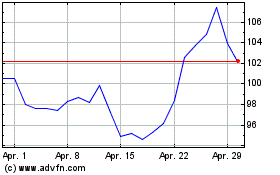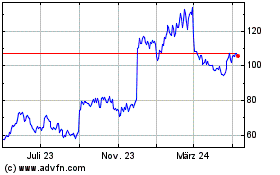Elastic Security Labs Releases Guidance to Avoid LLM Risks and Abuses
06 Mai 2024 - 8:00PM
Business Wire
Product controls and SOC countermeasures to
securely adopt LLMs
Elastic (NYSE: ESTC), the leading Search AI company, announced
LLM Safety Assessment: The Definitive Guide on Avoiding Risk and
Abuses, the latest research issued by Elastic Security Labs. The
LLM Safety Assessment explores large language model (LLM) safety
and provides attack mitigation best practices and suggested
countermeasures for LLM abuses.
Generative AI and LLM implementations have become widely adopted
over the past 18 months, with some companies pushing to implement
them as quickly as possible. This has expanded the attack surface
and left developers and security teams without clear guidance on
how to adopt emerging LLM technology safely.
“For all their potential, broad LLM adoption has been met with
unease by enterprise leaders, seen as yet another doorway for
malicious actors to gain access to private information or a
foothold in their IT ecosystems,” said Jake King, head of threat
and security intelligence at Elastic. “Publishing open
detection engineering content is in Elastic’s DNA. Security
knowledge should be for everyone—safety is in numbers. We hope that
all organizations, whether Elastic customers or not, can take
advantage of these new rules and guidance.”
The LLM Safety Assessment builds and expands on the Open Web
Application Security Project (OWASP) research focused on the most
common LLM attack techniques. The research includes crucial
information security teams can use to protect their LLM
implementations, including in-depth explanations of risks, best
practices and suggested countermeasures to mitigate attacks. The
countermeasures explored in the research cover different areas of
the enterprise architecture — primarily in-product controls — that
developers should adopt when building LLM-enabled applications and
information security measures SOCs must add to verify and validate
the secure usage of LLMs.
In addition to 1000+ detection rules already published and
maintained on GitHub, Elastic Security Labs added an initial set of
detections just for LLM abuses. These new rules are an example of
the out-of-box detection rules now included to detect LLM
abuses.
“Normalizing and standardizing how data is ingested and analyzed
makes the industry safer for everyone — which is exactly what this
research intends to do,” said King. “Our detection rule
repository helps customers monitor threats with confidence, as
quickly as possible, and now includes LLM implementations. The
rules are built and maintained publicly in alignment with Elastic’s
dedication to transparency.”
Additional Resources
- Blog: Elastic Advances LLM Security with Standardized Fields
and Integrations
- Explores the creation of integration workflows to reduce
friction when assessing LLM security and details a new integration
with AWS Bedrock
- Blog: Embedding Security in LLM Workflows: Elastic's Proactive
Approach
- Highlights suggestions and examples of how to detect malicious
LLM activities with ES|QL, and proposes a proxy based telemetry
solution.
- Blog: Accelerating Elastic detection tradecraft with LLMs
- Focuses on Elastic Security Labs’ dedication to LLM research in
the context of streamlining detection workflows with generative
AI
About Elastic
Elastic (NYSE: ESTC), the Search AI Company, enables everyone to
find the answers they need in real-time using all their data, at
scale. Elastic’s solutions for search, observability and security
are built on the Elastic Search AI Platform, the development
platform used by thousands of companies, including more than 50% of
the Fortune 500. Learn more at elastic.co.
Elastic and associated marks are trademarks or registered
trademarks of Elastic N.V. and its subsidiaries. All other company
and product names may be trademarks of their respective owners.
View source
version on businesswire.com: https://www.businesswire.com/news/home/20240506945825/en/
Candace Metoyer PR-team@elastic.co
Elastic NV (NYSE:ESTC)
Historical Stock Chart
Von Apr 2024 bis Mai 2024

Elastic NV (NYSE:ESTC)
Historical Stock Chart
Von Mai 2023 bis Mai 2024
